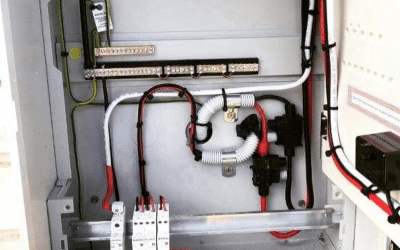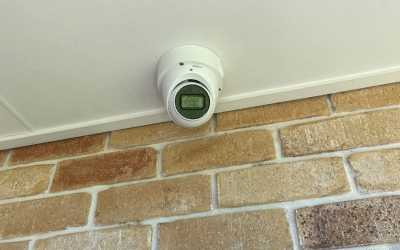In recent years, there’s been a growing awareness of the precarious state of our global environment. Unchecked pollution, resource depletion, and increasing greenhouse gas emissions have contributed to a series of climatic and environmental issues. This includes rising global temperatures, changing weather patterns, and loss of biodiversity. As residents of Brisbane, we are not exempt from these impacts. In fact, we experience them first-hand through extreme weather events and increasing temperatures, particularly during our renowned hot summer months.
The Crucial Role of Energy Efficiency
In addressing these environmental challenges, energy efficiency plays a pivotal role. It is one of the most effective methods of reducing greenhouse gas emissions, minimising resource usage, and lessening our overall impact on the environment. By using less energy to perform the same tasks, we can significantly decrease our ecological footprint. This is particularly pertinent in our own homes, where everyday appliances can consume a surprising amount of energy. Among these, air conditioning systems are often significant energy consumers. With Brisbane’s hot climate, AC units are not a luxury but a necessity for many of us, making energy-efficient models an essential consideration for the environment-conscious resident.
The Importance of Energy Efficiency in AC Systems
The Connection Between Energy Consumption and Environmental Impact
Every household appliance that we use consumes energy, most of which is produced by burning fossil fuels. This process releases carbon dioxide and other greenhouse gases into the atmosphere, contributing to global warming and climate change. Our electricity usage directly affects the amount of these emissions. In Brisbane, where air conditioning is an essential amenity, the energy consumption of our AC units should be a primary concern. By opting for energy-efficient models, we can significantly reduce our individual carbon footprints, thus helping to mitigate environmental damage.
How AC Systems Can Be Major Energy Consumers
Air conditioning systems are among the heaviest power consumers in most households. In Brisbane’s hot climate, AC units often run for extended periods, especially during the sweltering summer months. Older or poorly maintained units can be particularly energy-hungry, consuming an excess of electricity to cool our homes. This makes them a significant contributor to household energy usage, with potential adverse effects on our environment due to increased carbon emissions.
Understanding Energy-Efficient AC Systems
Basics of Energy-Efficient AC Systems
Energy-efficient air conditioners are designed to maximise cooling output while minimising energy consumption. These units utilise advanced technology and design innovations to optimise performance, providing the same or better cooling comfort while using less electricity. They are rated based on their Energy Efficiency Ratio (EER) and Seasonal Energy Efficiency Ratio (SEER), both of which measure the system’s cooling output against its power consumption. The higher these ratings, the more energy-efficient the unit.
The Technology Behind Energy-Efficient ACs
Energy-efficient AC units leverage a variety of advanced technologies to achieve superior performance. Among these are inverter technology and variable refrigerant flow (VRF) systems.
Inverter Technology
Inverter technology allows an air conditioner to vary its compressor speed. Unlike traditional AC units that operate the compressor at full capacity and then switch off once the desired temperature is achieved, inverter-equipped systems can adjust the compressor speed based on cooling needs. This means less energy wasted on start-up and shut-down cycles and more consistent, energy-efficient cooling.
Variable Refrigerant Flow (VRF) Technology
Variable Refrigerant Flow technology, or VRF, is another innovation that enhances AC energy efficiency. VRF systems can control the amount of refrigerant flowing to multiple evaporators (indoor units) from a single condensing unit (outdoor unit). This allows for individual temperature control of different zones in your home, maximising comfort and efficiency. VRF systems are highly efficient and adaptable, making them an excellent choice for energy-conscious homeowners in Brisbane.
The Environmental Benefits of Energy-Efficient AC Systems
Reduced Energy Consumption
The primary advantage of energy-efficient AC systems is their reduced energy consumption. By optimising cooling performance, these systems require less electricity to maintain a comfortable indoor climate.
Impact on the Power Grid
Lower energy consumption not only shrinks your power bill but also reduces stress on our electricity grid. This is particularly important during peak usage times, like those hot Brisbane afternoons when the demand for cooling can cause power surges. By adopting energy-efficient AC systems, we can collectively help prevent blackouts and ensure a more stable power supply for everyone.
Minimising Carbon Emissions
Reduced energy consumption also equates to decreased carbon emissions. By using less electricity, energy-efficient AC systems contribute to fewer greenhouse gases being released into the atmosphere. This is a crucial step towards reducing our environmental impact and combatting climate change.
Lowering Heat Waste
Energy-efficient air conditioners are designed to minimise waste heat, another significant environmental benefit. Traditional AC systems expel excess heat into the surrounding environment, contributing to the urban heat island effect.
Mitigation of Urban Heat Island Effect
The urban heat island effect is a phenomenon where urban areas become significantly warmer than surrounding rural areas due to human activities. This effect can exacerbate the heat in cities like Brisbane, making our summers even more uncomfortable. By reducing waste heat, energy-efficient AC systems can help mitigate this effect, leading to cooler and more liveable urban environments.
Decreased Reliance on Fossil Fuels
As energy-efficient AC systems require less electricity, they also reduce our dependence on fossil fuels, the primary source of power generation in Australia. By decreasing the demand for electricity, we can lessen the need for coal and gas extraction, leading to fewer environmental disturbances and pollution events. In this way, energy-efficient AC systems contribute to a more sustainable and environmentally friendly energy sector.
Energy-Efficient AC Systems and Sustainable Development
Contribution to Energy Conservation Goals
Embracing energy-efficient AC systems can significantly contribute to local and national energy conservation goals. By reducing individual energy usage, we collectively lower the overall power demand in Brisbane, helping our city to become more energy-efficient and sustainable. Such a contribution supports Australia’s broader efforts to reduce energy consumption and mitigate the effects of climate change.
Alignment with UN Sustainable Development Goals (SDGs)
The adoption of energy-efficient AC systems also aligns with the United Nations Sustainable Development Goals (SDGs), particularly Goal 7: Affordable and Clean Energy and Goal 13: Climate Action. By decreasing our reliance on fossil fuels and reducing carbon emissions, we contribute to global efforts towards cleaner, renewable energy sources and the necessary action to combat climate change.
Making the Switch to Energy-Efficient AC Systems
Assessing Your Current AC System
To make the transition to an energy-efficient AC system, the first step is to assess your current air conditioner’s performance and energy efficiency. Look at factors such as age, maintenance history, energy consumption, and cooling efficiency. If your system is old, frequently breaks down, or your energy bills have been increasing, it might be time for an upgrade.
Selecting the Right Energy-Efficient AC System for Your Needs
When choosing an energy-efficient AC system, it’s essential to select a unit that matches your specific needs and the cooling demands of your home.
The Importance of the Energy Efficiency Ratio (EER)
One of the key factors to consider is the Energy Efficiency Ratio (EER) of the AC unit. EER is a measure of an air conditioner’s cooling capacity relative to its power input. A higher EER signifies a more energy-efficient unit, leading to greater energy savings over time.
Understanding the Seasonal Energy Efficiency Ratio (SEER)
Another crucial factor is the Seasonal Energy Efficiency Ratio (SEER), which measures the AC unit’s cooling output over a typical cooling season divided by the energy it consumed in Watt-Hours. Similar to EER, a higher SEER rating indicates a more energy-efficient system. By understanding these ratings, you can make an informed choice about the most energy-efficient and cost-effective AC system for your Brisbane home.
The Economic Benefits of Energy-Efficient AC Systems
Long-Term Cost Savings
While energy-efficient AC systems may require a higher upfront investment, they provide significant cost savings in the long run. These units consume less electricity, leading to noticeably lower utility bills. Over time, the savings on your energy bills will offset the initial cost of the system, making it a financially sound choice. Moreover, energy-efficient systems often come with advanced technologies that enhance durability and prolong operational life, reducing maintenance and replacement costs.
Government Incentives and Rebates in Australia
To encourage energy conservation, the Australian government and various state governments, including Queensland, offer incentives and rebates for installing energy-efficient appliances, including AC systems. These programs can offset a portion of the upfront cost, making energy-efficient units more affordable. By taking advantage of these incentives, homeowners in Brisbane can contribute to environmental sustainability while enjoying financial benefits.
Case Study: Energy-Efficient AC Systems in Action
A Residential Success Story in Australia
Consider the case of a Brisbane family who replaced their decade-old AC system with a high-efficiency model. Despite the initial cost, the family noticed an immediate decrease in their energy bills. Within a few years, they had recouped their initial investment through energy savings. Moreover, their home was cooler and more comfortable, even during the hottest summer months. The family also found satisfaction in knowing they were contributing to a greener, more sustainable Brisbane.
An Australian Commercial Building’s Experience
In a larger scale, an office building in the heart of Brisbane upgraded its HVAC system to a state-of-the-art energy-efficient model. The new system allowed for better temperature control, providing a more comfortable working environment. But the most impressive benefit was the drastic reduction in the building’s energy consumption, which led to substantial financial savings. The building management also qualified for a government rebate, making the transition to the energy-efficient system an economically beneficial move. This case serves as an example of how the benefits of energy-efficient AC systems extend beyond the residential context and can also make a significant impact in commercial settings.
Overcoming Barriers to Energy-Efficient AC System Adoption
Debunking Common Misconceptions
Despite the clear advantages of energy-efficient AC systems, misconceptions may deter some homeowners. For instance, some believe that energy-efficient models don’t cool as effectively. However, these units are designed to provide the same, if not better, cooling performance while using less energy. Another myth is that maintenance for these systems is more complicated or costly. In reality, like any AC system, regular service ensures optimal operation and lifespan, and with their advanced design, energy-efficient models often require less frequent servicing.
Addressing Cost-Related Concerns
The initial cost of energy-efficient AC systems can be higher than less efficient models. This price tag can deter potential buyers. However, the long-term savings on energy bills, along with potential government rebates, can offset the initial expense. By considering the total lifecycle cost of an AC system – purchase, operation, maintenance, and disposal – one can see that an energy-efficient model is often the more economical choice.
Future Trends in Energy-Efficient AC Systems
Advancements in AC Technology
The world of AC systems is not static, and we can expect further advancements in energy efficiency as technology progresses. Innovations such as smart thermostats and AI-enabled climate control are already on the market, providing even more ways to optimise energy use. Moreover, continued research and development promise even more efficient and environmentally friendly cooling solutions in the future.
Policy Changes Encouraging Energy-Efficient AC Use
On a larger scale, changes in policy and regulations are likely to further encourage the use of energy-efficient AC systems. The Australian government is progressively updating energy efficiency standards and introducing more stringent labelling requirements for appliances, including AC units. These measures, combined with ongoing public education campaigns and financial incentives, aim to make energy-efficient AC systems the norm rather than the exception in Brisbane homes.
Conclusion
Summarising the Environmental Benefits of Energy-Efficient AC Systems
In our journey exploring energy-efficient AC systems, we’ve seen how these sophisticated units offer more than just superior cooling performance. They are integral to our sustainable future, reducing energy consumption, lowering carbon emissions, mitigating the urban heat island effect, and decreasing our reliance on fossil fuels. Beyond these environmental benefits, they also bring significant economic advantages, from long-term cost savings to government incentives.
Encouragement for Future Adoption of Energy-Efficient Technology
While the initial cost and certain misconceptions may deter some homeowners, we’ve debunked these concerns, making a compelling case for the wider adoption of energy-efficient AC systems in Brisbane and beyond. As technology continues to advance and policy changes incentivise energy-efficient practices, we can look forward to a time when these systems become the norm in our homes and offices. We each have a role to play in shaping this energy-efficient future. So, let’s embrace these cutting-edge technologies and contribute to a cooler, sustainable, and environmentally friendly Brisbane.







